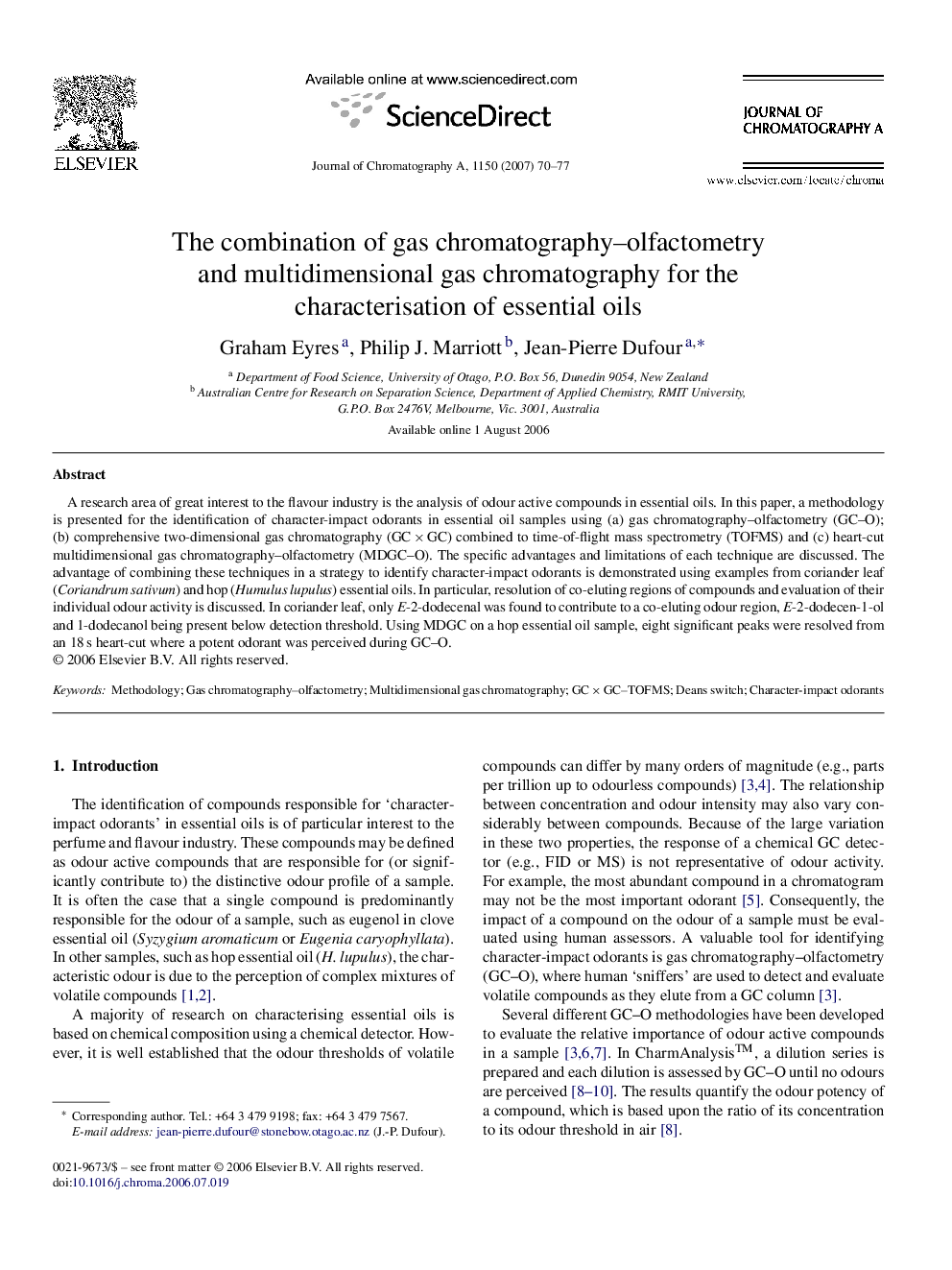| Article ID | Journal | Published Year | Pages | File Type |
|---|---|---|---|---|
| 1209103 | Journal of Chromatography A | 2007 | 8 Pages |
A research area of great interest to the flavour industry is the analysis of odour active compounds in essential oils. In this paper, a methodology is presented for the identification of character-impact odorants in essential oil samples using (a) gas chromatography–olfactometry (GC–O); (b) comprehensive two-dimensional gas chromatography (GC × GC) combined to time-of-flight mass spectrometry (TOFMS) and (c) heart-cut multidimensional gas chromatography–olfactometry (MDGC–O). The specific advantages and limitations of each technique are discussed. The advantage of combining these techniques in a strategy to identify character-impact odorants is demonstrated using examples from coriander leaf (Coriandrum sativum) and hop (Humulus lupulus) essential oils. In particular, resolution of co-eluting regions of compounds and evaluation of their individual odour activity is discussed. In coriander leaf, only E-2-dodecenal was found to contribute to a co-eluting odour region, E-2-dodecen-1-ol and 1-dodecanol being present below detection threshold. Using MDGC on a hop essential oil sample, eight significant peaks were resolved from an 18 s heart-cut where a potent odorant was perceived during GC–O.
